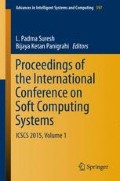Abstract
Individual’s appearance changes as age progresses, this shows immeasurable potential uses of programmed face recognition over ages. Since different individuals age in different way, a “sufficient and complete” dataset ought to contain the complete aging examples of the number of individuals as are important to speak to the entire populace. In any case, age progression cannot be artificially controlled. The collection of the aging images hence normally obliges extraordinary exertion in looking for photos taken years back, and future images cannot be procured. The two methodologies considered to recognize faces across age variations are discriminative-based methodology and generative-based methodology. In this paper, we propose a novel technique to recognize faces across age progressions. We also analyze different best in class systems accessible in discriminative-based methodology and generative-based methodology; this analyzes are performed on different standard age varying face databases.
Access this chapter
Tax calculation will be finalised at checkout
Purchases are for personal use only
References
Eidinger E, Enbar R et al (2014) Age and gender estimation of unfiltered faces. Inf Forensics Security 9(12):2170–2179
Mahalingam G, Ricanek K Jr et al (2014) Investigating the periocular-based face recognition across gender transformation. Inf Forensics Security 9(12):2180–2192
Bruyer R, Scailquin J-C Person recognition and ageing: the cognitive status of addresses-an empirical question. Int J Psychol 29(3):351–366
Li L, Su H, Xing E, Fei-Fei L (2010) Object bank: a high-level image representation for scene classification & semantic feature sparsification. Proc Adv Neural Inf Process Syst (NIPS) (2010)
Li L, Su H, Lim Y, Fei-Fei L (2010) Objects as attributes for scene classification. Proc. European Conf computer vision (ECCV). In: First Int’l workshop parts and attributes
Park U, Tong Y, Jain AK (2010) Age-invariant face recognition. IEEE Trans Pattern Anal Mach Intell 32(5):947–954
Hoffmann H (2007) Kernel PCA for novelty detection. Pattern Recognit 40(3):863–874
IARPA Broad Agency Announcement: BAA-13-07, Janus Program. http://www.iarpa.gov/Programs/sc/Janus/solicitation_janus.html (Nov. 2013)
Belhumeur P, Hespanha J, Kriegman D (1997) Eigenfaces vs. fisherfaces: recognition using class specific linear projection. IEEE Trans Pattern Analysis Mach Intell 19(7):711–720
Vasilescu MAO, Terzopoulos D (2002) Multilinear image analysis for facial recognition. In: IEEE international conference on pattern recognition
Wolf L, Hassner T, Taigman Y (2009) The one-shot similarity kernel. In: IEEE international conference on computer vision
Wright J, Yang A, Ganesh A, Sastry S, Ma Y (2009) Robust face recognition via sparse representation. IEEE Trans Pattern Anal Mach Intell 31(2):210–227
Bolme DS, Draper BA, Beveridge JR (2009) Average of synthetic exact filters. Comput Vision Pattern Recognit
Geng X, Yin C, Zhou Z-H et al (2013) Facial age estimation by learning from label distributions. Pattern Anal Mach Intell 35(10):2401–2412
Paone JR, Flynn PJ, Jonathon Philips P et al (2014) Double trouble: differentiating identical twins by face recognition. Inf Forensics Security 9(2):285–295
Chen H, Gallagher AC et al (2014) The hidden sides of names-face modeling with first name attributes. Pattern Anal Mach Intell 36(9):1860–1873
Singh M, Nagpal S, Singh R, Vatsa M et al (2014) On recognizing face images with weight and age variations. Access 2:822–830
Bouchaffra D (2014) Nonlinear topological component analysis: application to age-invariant face recognition. Neural Networks Learn Syst 99:1
Lacey Best-Rowden H, Han C et al (2014) Collection unconstrained face recognition: identifying a person of interest from a media. Inf Forensics Security 9(12):2144–2157
Chiachia G, Falcao AX, Pinto N et al (2014) Learning person-specific representations from faces in the wild. Inf Forensics Security 9(12):2089–2099
Kong AW, Zhang D, Lu G (2006) A study of identical twins’ palmprints for personal verification. Pattern Recognit 39(11):2149–2156
Prabhakar JS, Pankanti S (2002) On the similarity of identical twin fingerprints. Pattern Recognit 35(11):2653–2663
Hollingsworth K, Bowyer K, Flynn P (2010) Similarity of iris texture between identical twins. In: Proceedings IEEE Computer Society Conference CVPRW, pp. 22–29
Ariyaeeiniaa A, Morrison C, Malegaonkara A, Black B (2008) A test of the effectiveness of speaker verification for differentiating between identical twins. Sci Justice 48(4):182–186
Fernandes Steven L, Josemin Bala G (2014) 3D and 4D face recognition: a comprehensive review. Recent Patents Eng 8(2):112–119
Fernandes SL, Josemin Bala G (2014) Development and analysis of various state of the art techniques for face recognition under varying poses. Recent Patents Eng 8(2):143–146
Fernandes Steven L, Josemin Bala G (2015) Recognizing faces when images are corrupted by varying degree of noises and blurring effects. Adv Intell Syst Comput 337(1):101–108
Fernandes SL, Josemin Bala G (2015) Low power affordable, efficient face detection in the presence of various noises and blurring effects on a single-board computer. Adv Intell Syst Comput 337(1):119–127
Acknowledgments
The proposed work was made possible because of the grant provided by Vision Group Science and Technology (VGST), Department of Information Technology, Biotechnology and Science and Technology, Government of Karnataka, Grant No. VGST/SMYSR/GRD-402/2014–15 and the support provided by Department of Electronics and Communication Engineering, Karunya University, Coimbatore, Tamil Nadu, India.
Author information
Authors and Affiliations
Corresponding author
Editor information
Editors and Affiliations
Rights and permissions
Copyright information
© 2016 Springer India
About this paper
Cite this paper
Fernandes, S.L., Josemin Bala, G. (2016). A Novel Technique to Recognize Human Faces Across Age Progressions. In: Suresh, L., Panigrahi, B. (eds) Proceedings of the International Conference on Soft Computing Systems. Advances in Intelligent Systems and Computing, vol 397. Springer, New Delhi. https://doi.org/10.1007/978-81-322-2671-0_36
Download citation
DOI: https://doi.org/10.1007/978-81-322-2671-0_36
Published:
Publisher Name: Springer, New Delhi
Print ISBN: 978-81-322-2669-7
Online ISBN: 978-81-322-2671-0
eBook Packages: EngineeringEngineering (R0)

